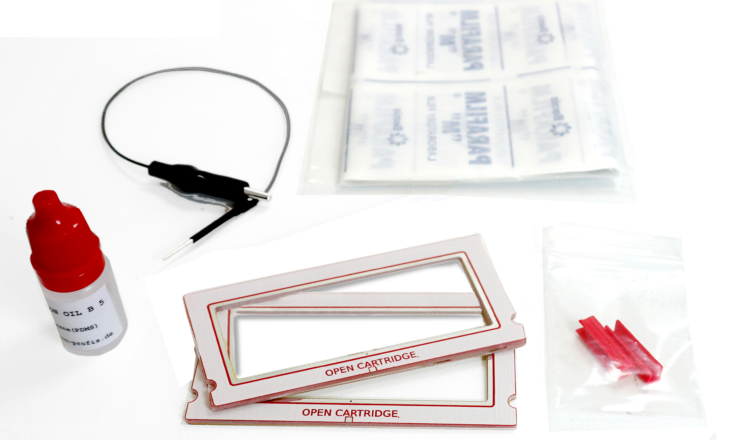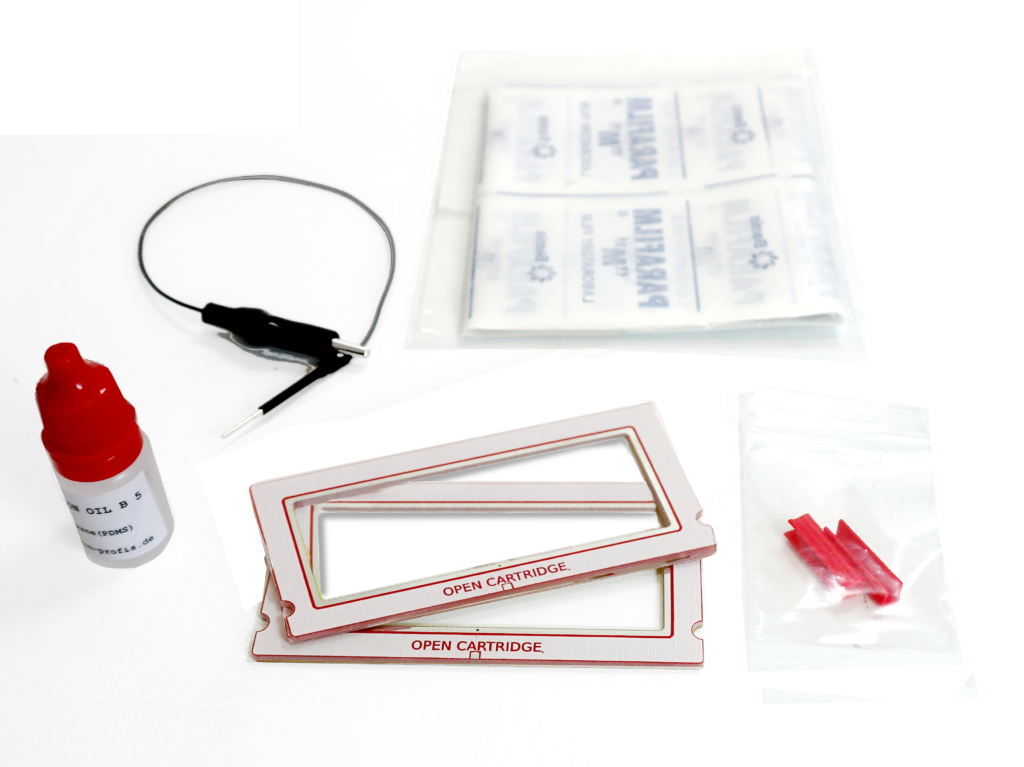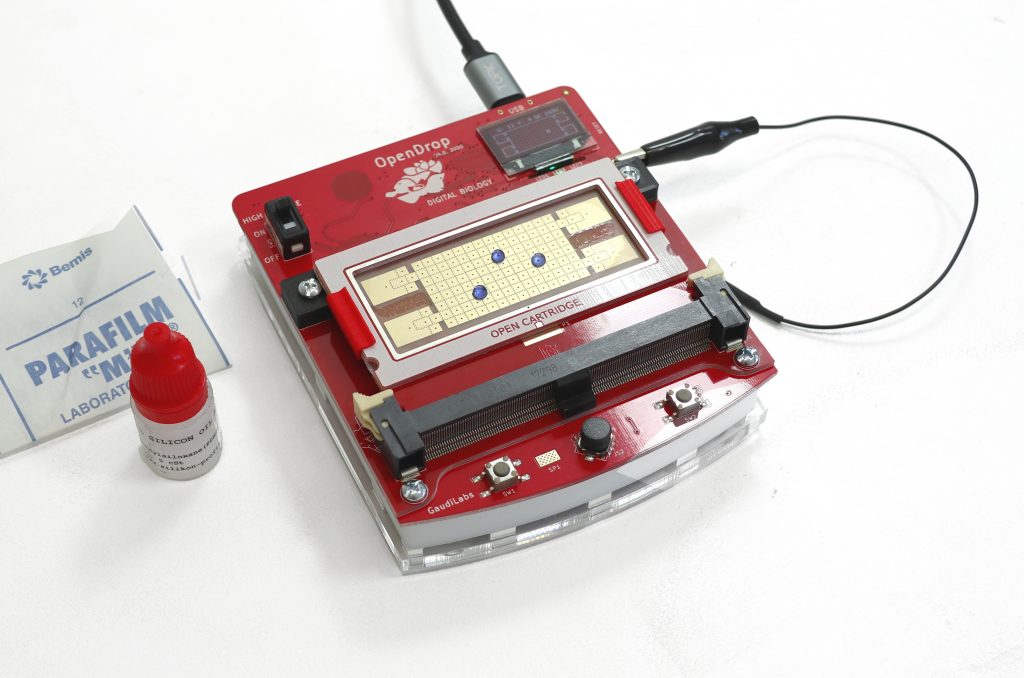
The Open Cartridge Kit for OpenDrop V4 includes everything you need to coat electrowetting cartridges yourself. The simple procedure to coat the electrode array using readily available materials was developed over the years in the Digital Biology Community. The method is ideal to learn about electrowetting and does not need any specific equipment. The procedure works to make an open or “topless” electrowetting configuration with the droplets sitting openly on the cartridge without top cover glass. The little spherical droplets dancing around are a true eye-catcher. This makes it ideal for workshops, education and technology demonstrations.
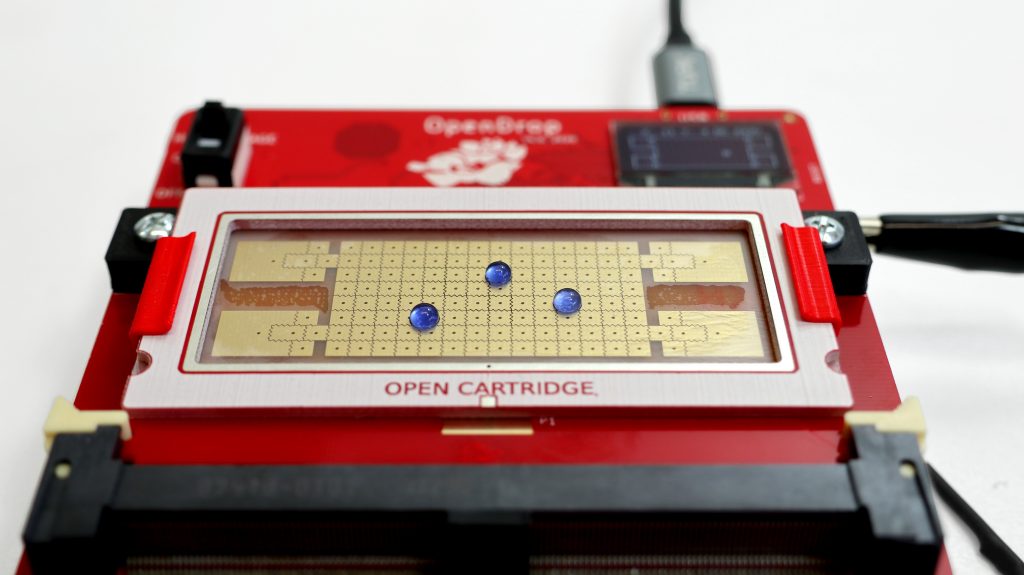
Materials in the kit:
- 3 Foil carrier frames
- 1 m of Parafilm M, Laboratory Film
- 5 ml of Polydimethylsiloxane (PDMS), Viscosity: 6 cSt
- 2 clips
- Ground wire, gold coated spring pin with rounded end
You can buy the kit online in the GaudiShop here.
Additional tools and materials needed:
- Cutter knife
- Ruler
- Painters tape
- Gloves
- Pipette
- Distilled water
- Ink (optional)
The open cartridge configuration can be run with distilled water and ink and does not need any special liquid.
Note: Splitting and reservoir dispensing is not possible with the open cartridge configuration. For splitting and reservoir dispensing a top cover configuration is needed such as the OpenDrop V4 cartridge system.
Instructions for the Open Cartridge
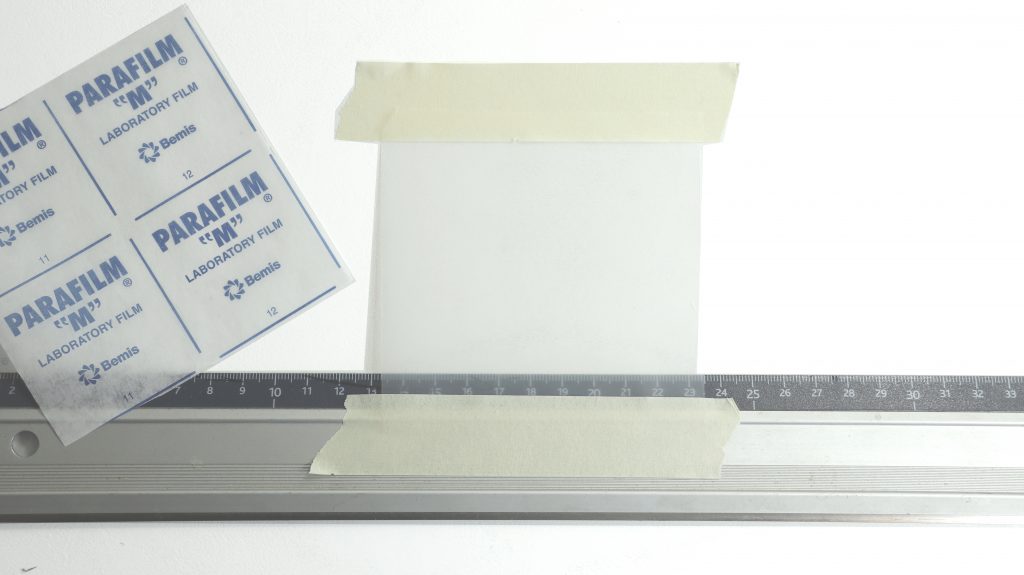
First cut a 10 cm piece of Parafilm and remove the paper cover.
Using painters tape attach one end to the table and the other end on a ruler.
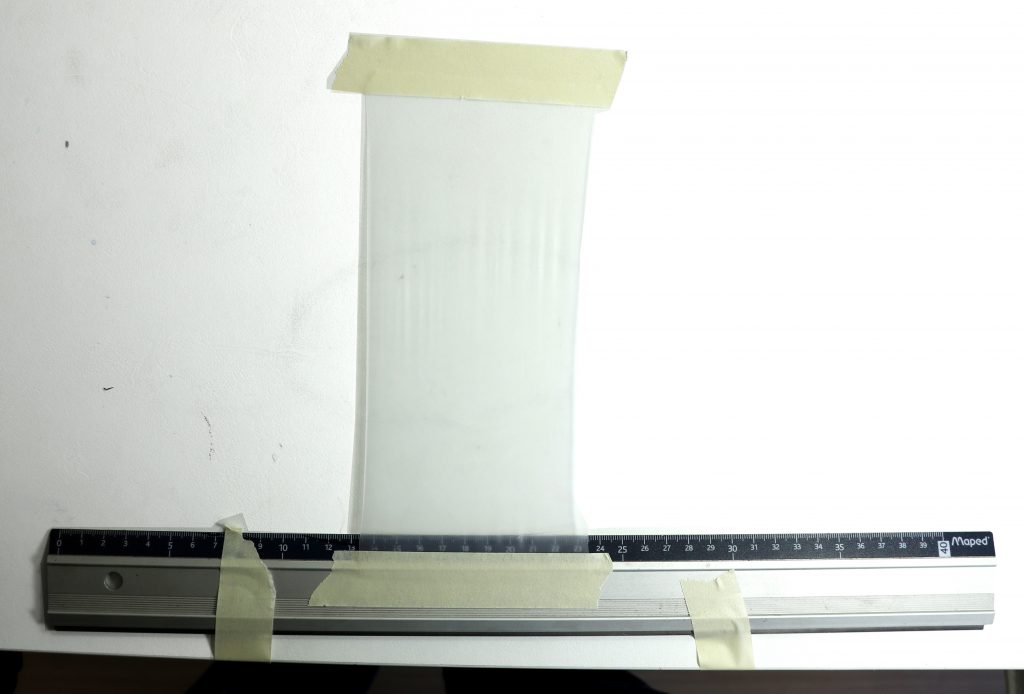
Stretch the parafilm to 2.5x the length by pulling down evenly the ruler. Then fix the ruler with more tape.
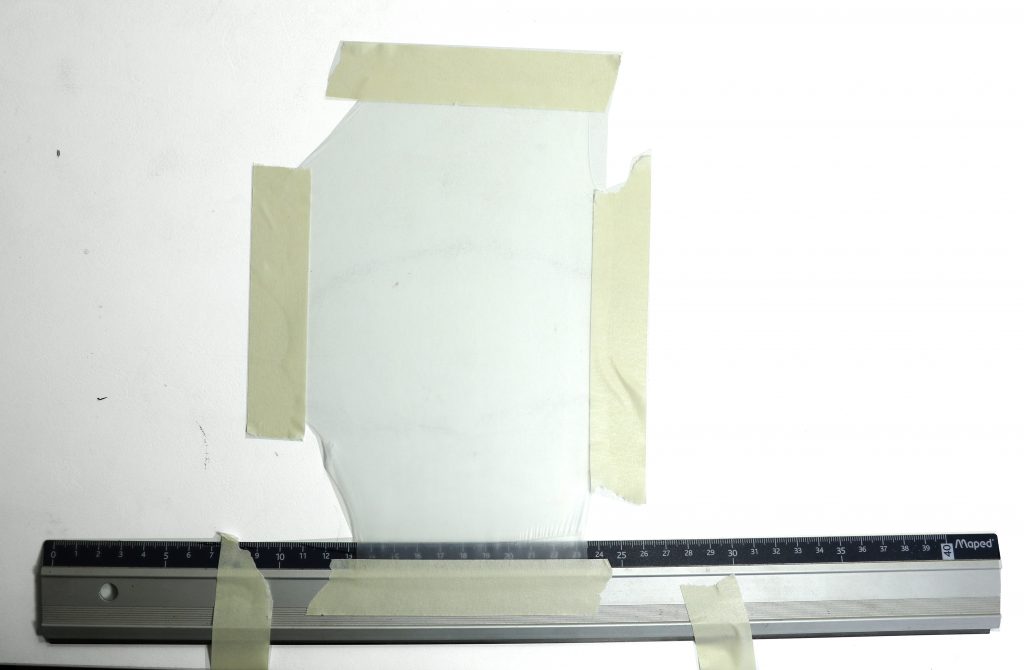
Also stretch the Parafilm a bit on the two sides.
Avoid holes or uneven surfaces.
The parafilm should now be a thin film of about 15-30 micrometers thickness.
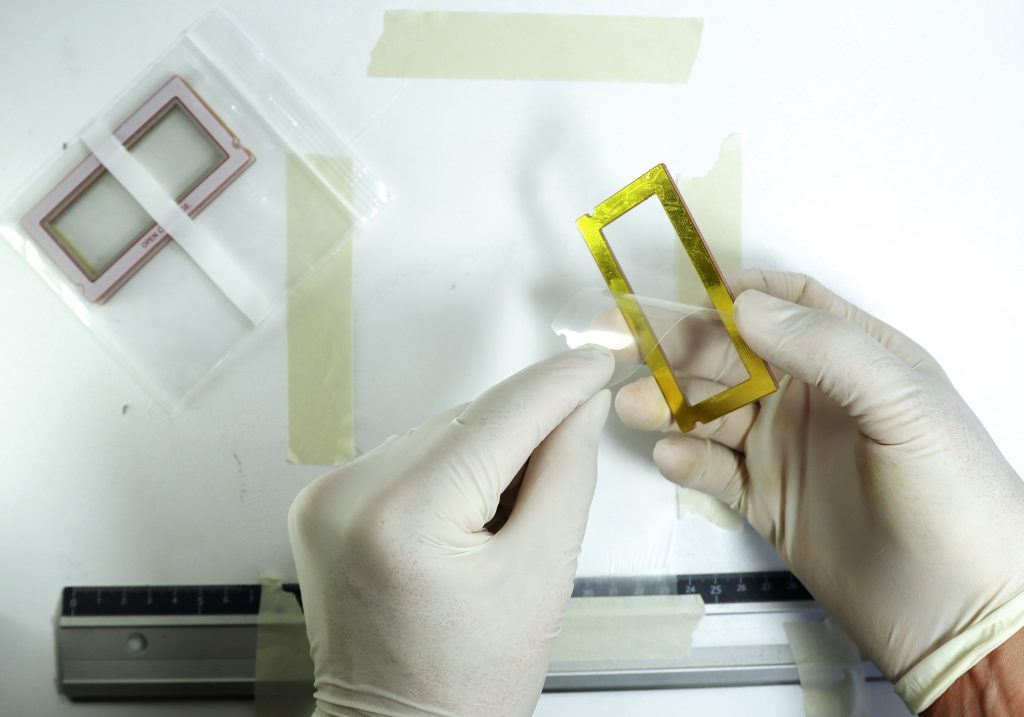
Now take one of the Open Cartridge frames and remove the protective cover to expose the sticking tape.
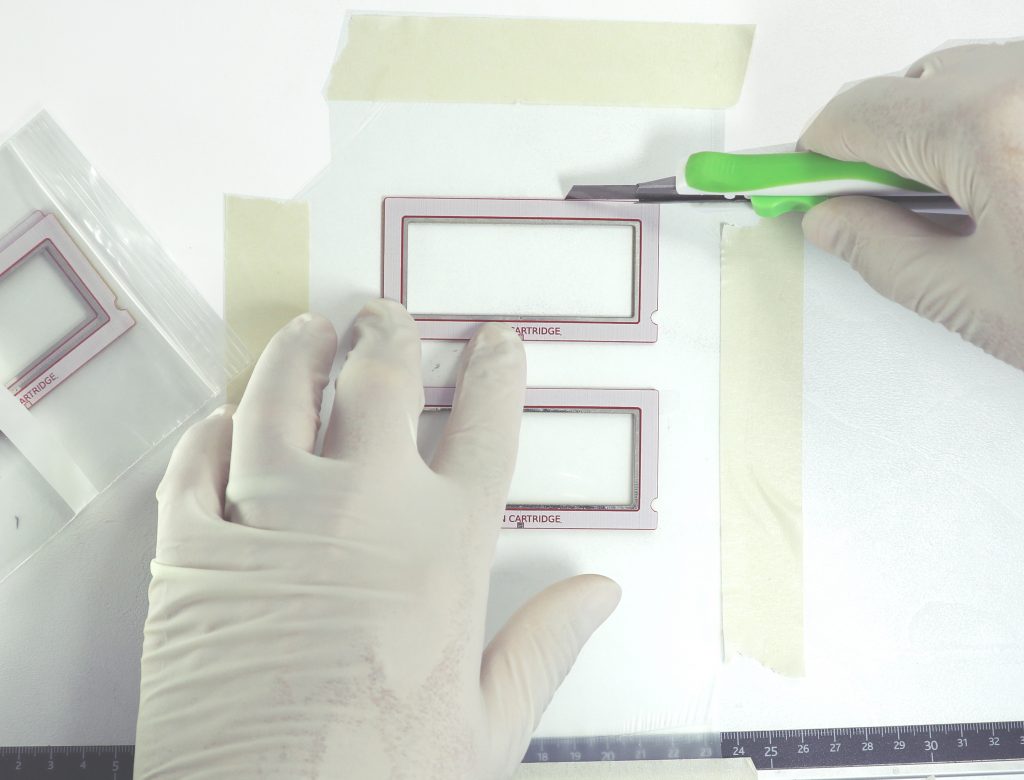
Press the frame firmly on the stretched Parafilm. You can place multiple frames at once. Then cut out along the sides of the frame.
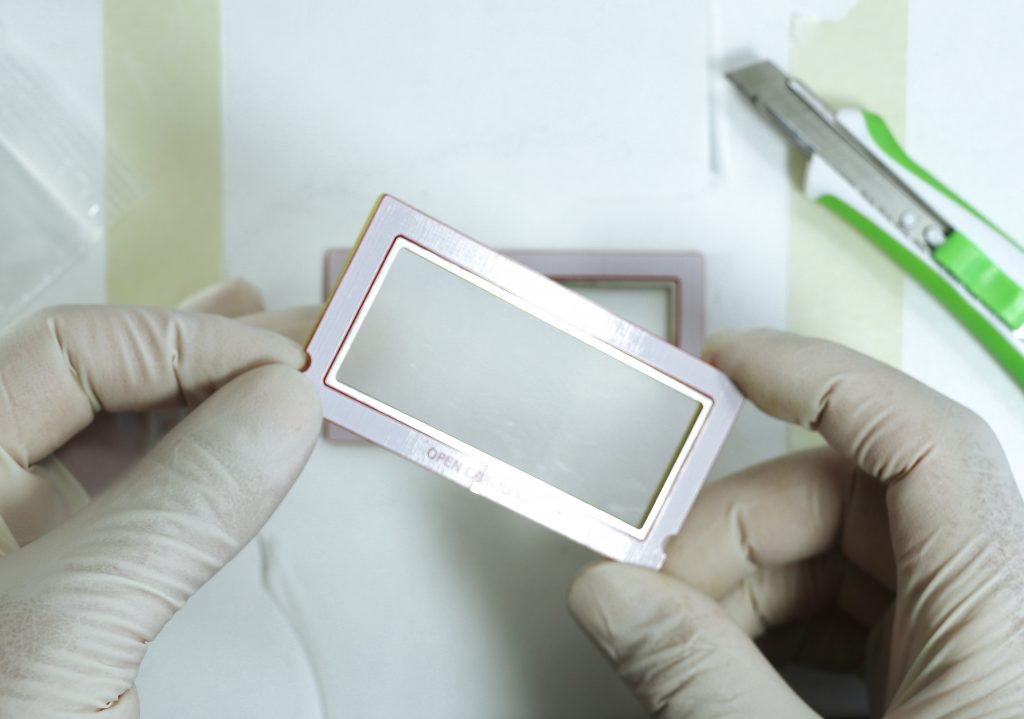
You should now have a frame with a thin film of Parafilm stretched evenly and without holes or wrinkles.
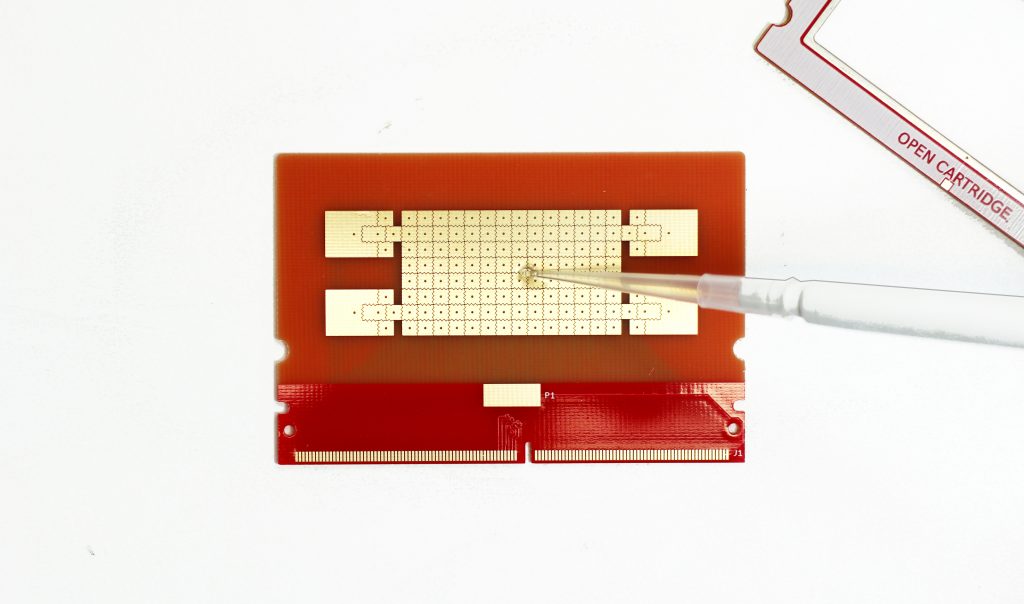
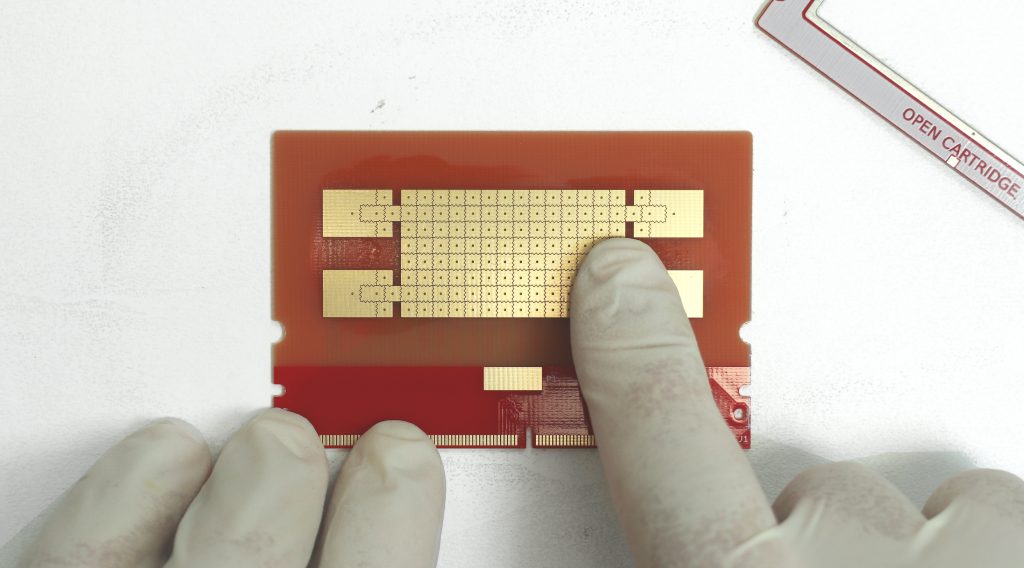
Next apply 15 microliters of PDMS-Oil (Viscosity: 6 cSt) directly on the electrode array of the cartridges circuit board. Spread evenly with your finger. This is to avoid any air-gap between the film and the electrodes.
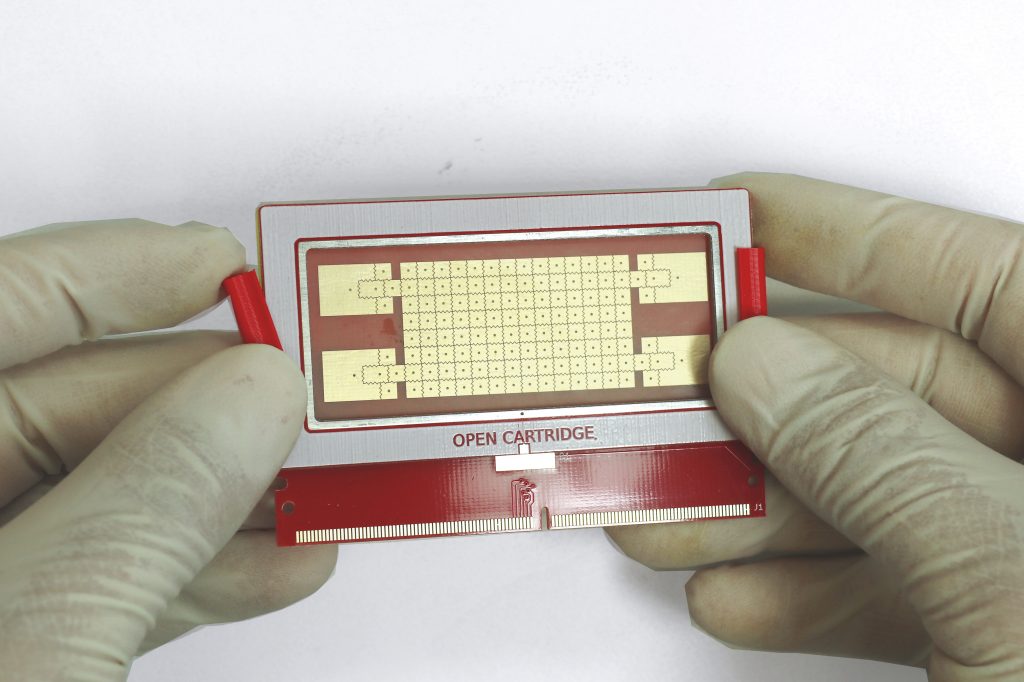
With the oil still wet, apply the frame with the stretched Parafilm to the circuit and fix with the clips. The cartridge is now ready for use.
Using the Open Cartridge
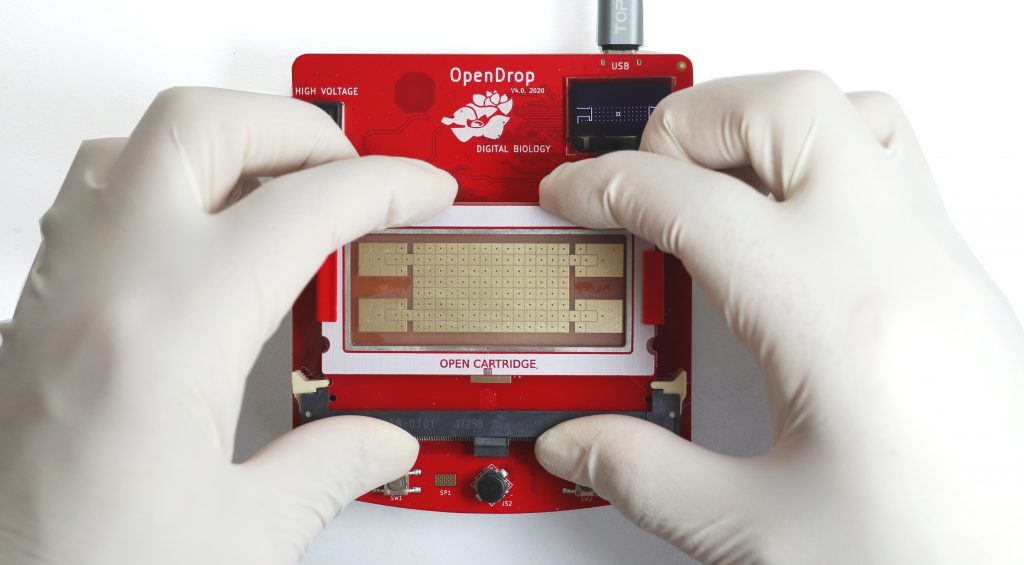
Install the cartridge in the cartridge connector of the OpenDrop Version 4 . Be sure to align well as shown in the picture below and press in with both hands until the cartridge snaps in.
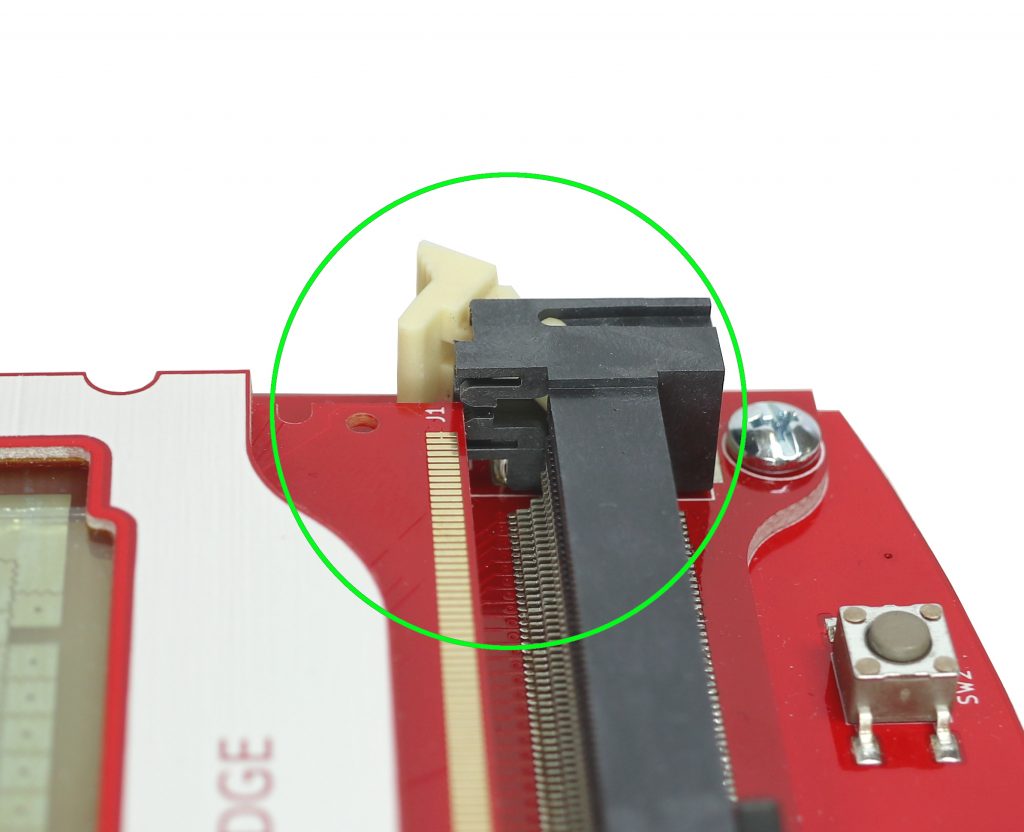
Correct alignment of the cartridge in the connector.
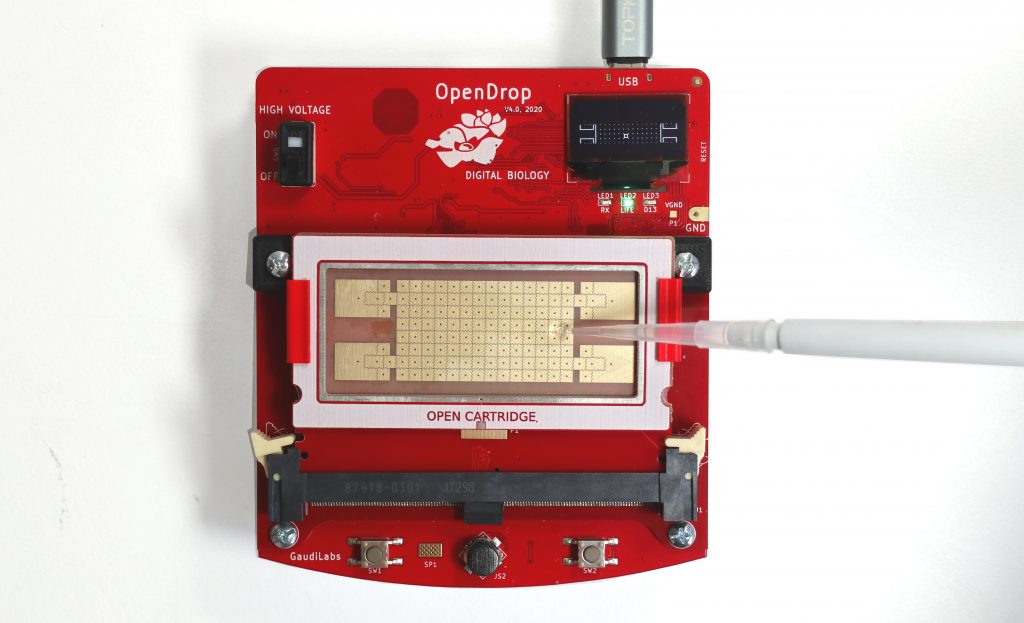
Apply 15ul of PDMS-Oil (Viscosity: 6 cSt) on top of the Parafilm to make it hydrophobic. Again spread it with your finger evenly across the whole surface.
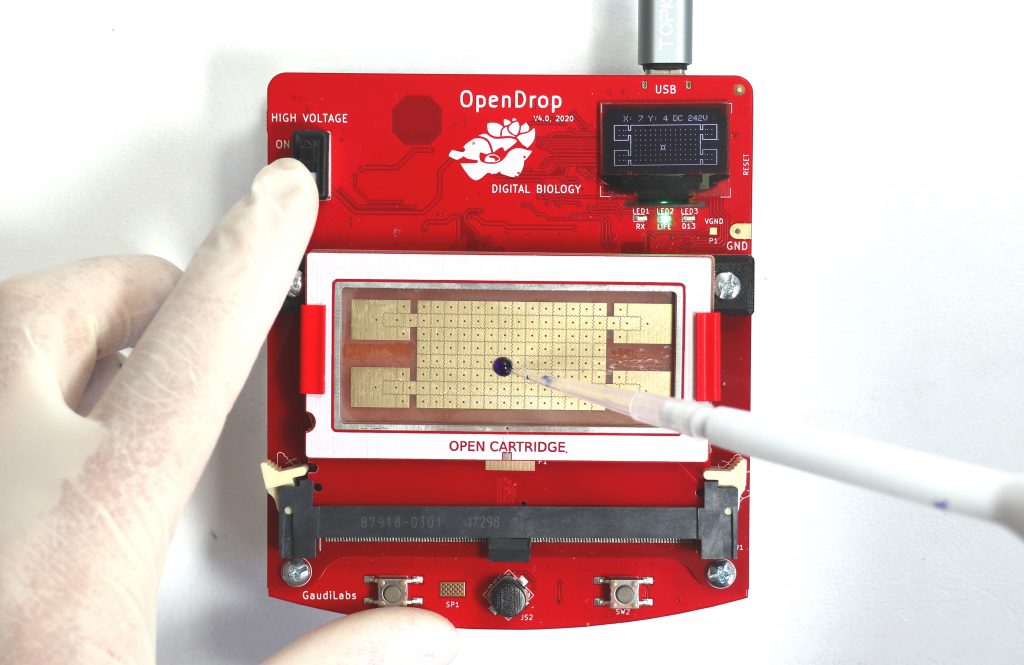
Now turn on the high voltage. Settings should be 240 VDC. Do not use AC for the open cartridge.
Then place a droplet of 15 micro-liter of distilled water on the active electrode.
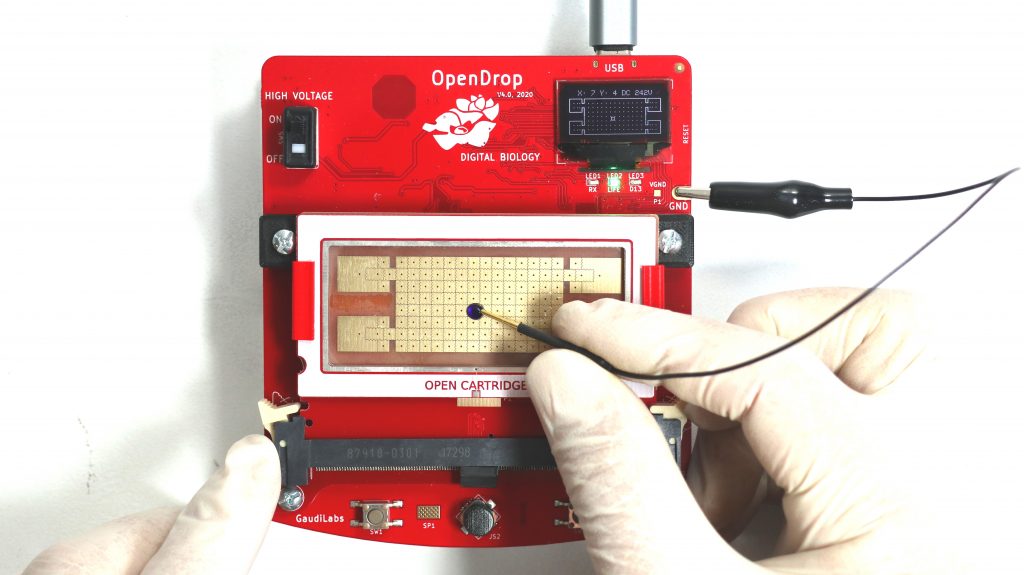
Connect the grounding wire with the alligator clip to the GND pad of the OpenDrop. With the water droplet sitting on the active electrode, touch the surface of the droplet with the golden tip of the grounding wire. This will remove any static charge from the liquid.
The droplet should now snap to the active electrode and you can move it around with the built in joystick.
Using the PC control software you can manipulate multiple droplets and run complex experiments.
If droplets don’t move on the first try – try again and make sure that you followed every step of the protocol carefully.
Buy the Open Cartridge Kit and the latest OpenDrop device in the GaudiShop.
Digital microfluidics based on electrowetting is a delicate technology that requires a lot of experience and knowledge. This protocol has been optimized over the years in many workshops and session with the Digital Biology Community and the Hackteria.org Network.

